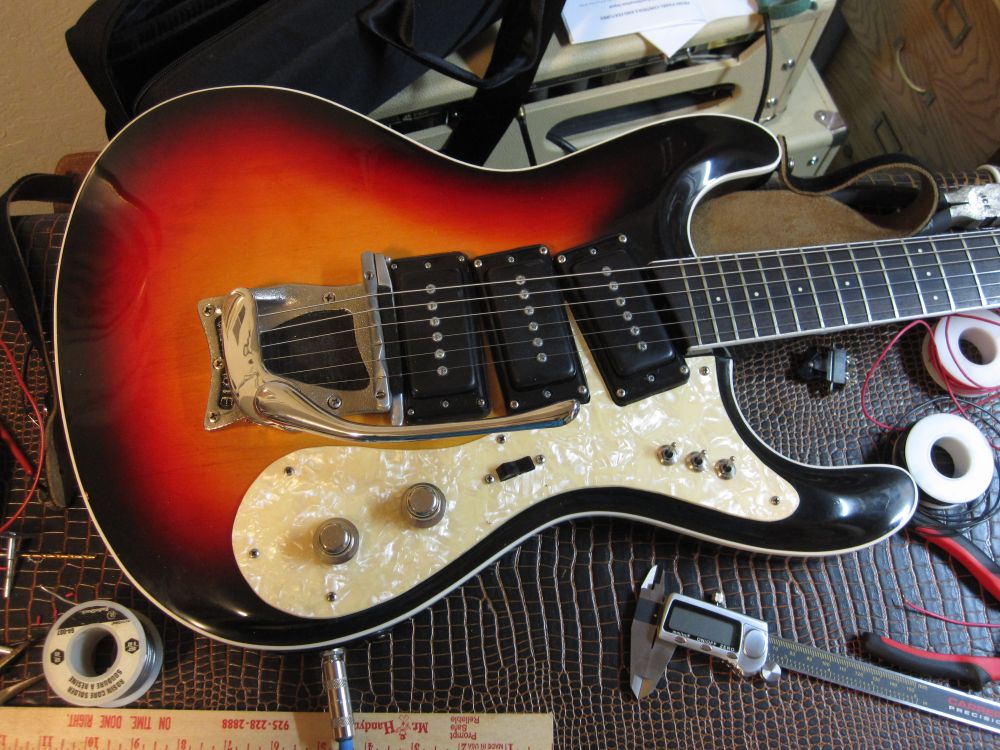First, I needed to decide which pickup would get the phase switch. I chose the bridge pickup, as I definitely wanted the neck/bridge out of phase combo, and I figured I'd make the bridge pickup special. Sort of a weird nod to the Rickenbacker 325s, with the neck/middle wired together. Anyhow, I'm glad I chose the bridge as the bridge/middle out of phase is a cool sound too. And it turns out that having all three pickups on with the bridge out of phase has an almost acoustic chime, which will definitely be useful.
Here's the guitar at the start of the project. Circuit is an on/off/on for each of the M3 dual output pickups wired (high output / off / low output), volume, tone (TBX treble/bass cut)
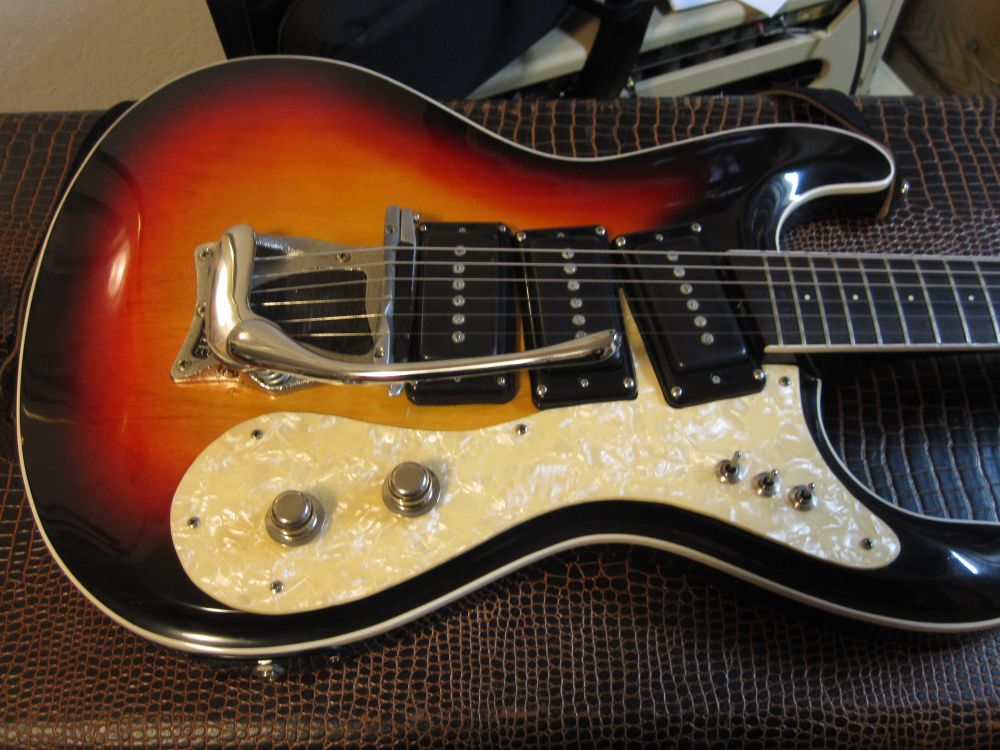
Here's the switch, showing the intended placement.
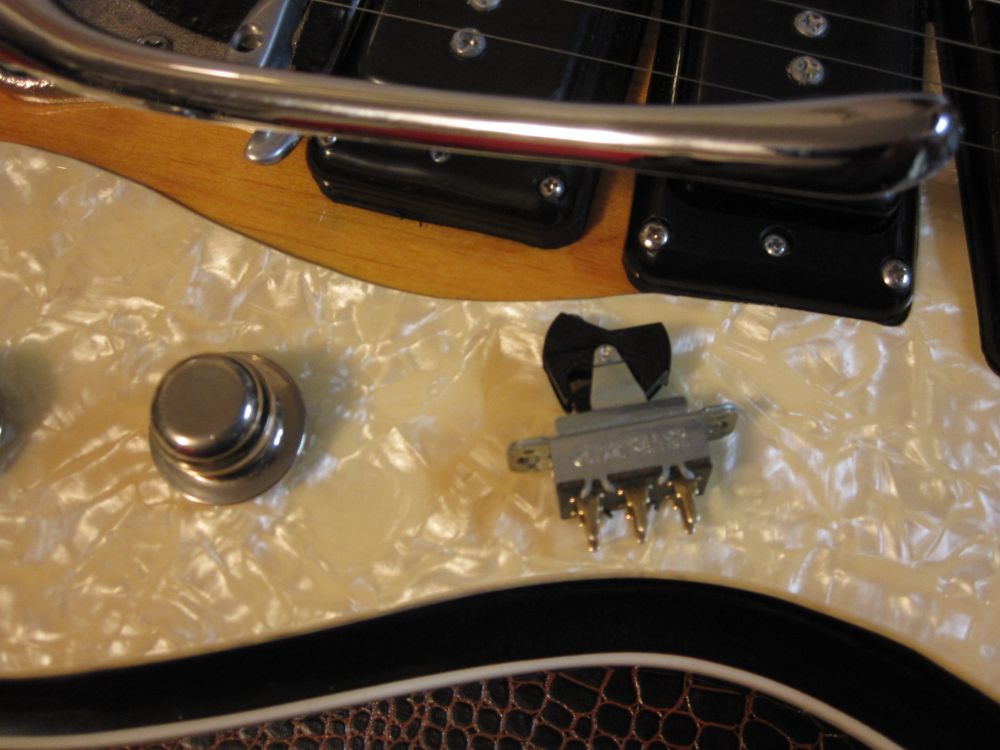
A close of up the switch - NOS Switchcraft rocker, basically a rocker assembly on top of a standard DPDT slider switch. Why a rocker? Besides looking cool, I felt a rocker switch would be less likely to get in my way or be accidently flipped than a mini toggle. While I suppose I could have used a push/pull volume pot, I've never liked push/pull pots as I always seem to pull the knob off. A push button would have been cool as that's what Semie used in the 70s, but they're not easy to come by, plus I've heard they have a tendency not to be as reliable or robust as rockers.
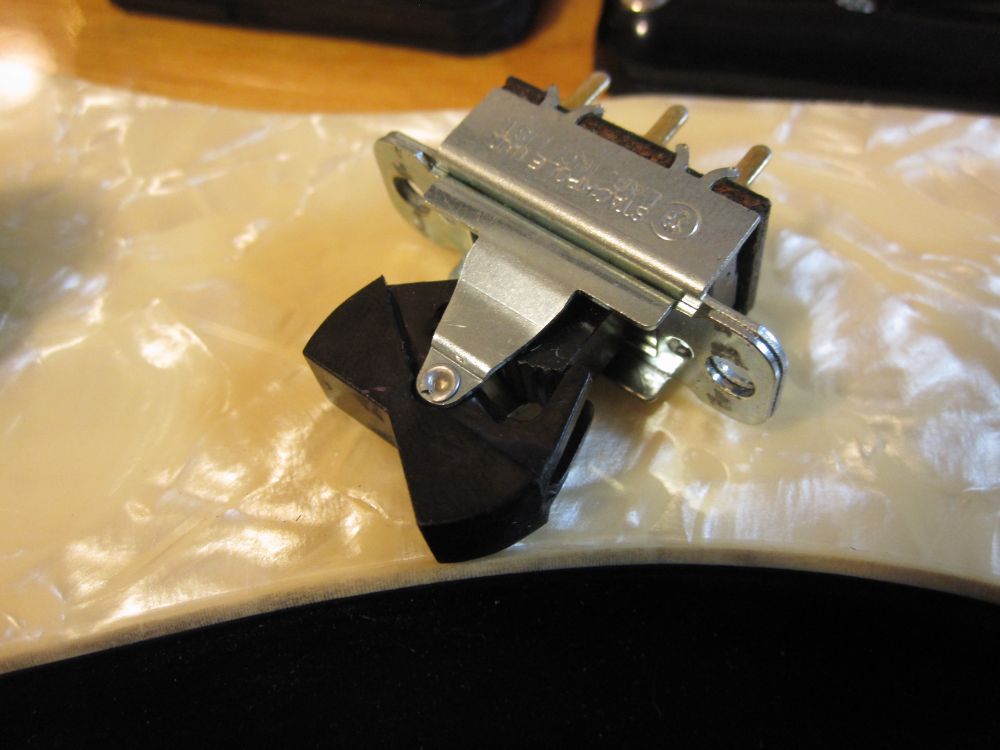
Here's the original wiring for the dual output pickups. Each pickup has three wires, white (full output), red (half output) and black (ground). The grounds are soldered to the back of the vol pot, so here you see only the hot wires. Note the wiring running straight down the middle of the three pickups. This is the switch output and runs to the volume/tone controls. In order to insert the phase switch into the circuit, the bridge pickup needs to be separated from the other two on the output side and the phase switch dropped in.
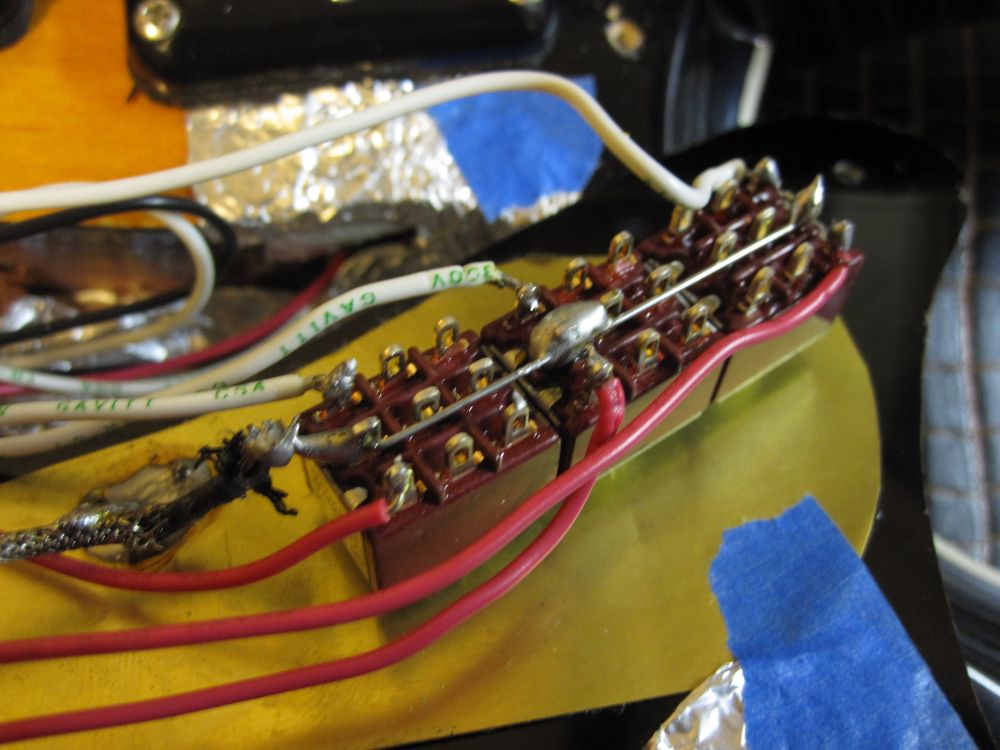
Here's the phase switch. The phase function is created by the red wires running from opposite corners of the switch (looks like an "X"). The center poles are the bridge pickup ground (black) and the hot output from the full/off/half selector switch (red). Because these pickups have dual modes, the phase switch has to be after the output selector. On the left side of the switch, the bottom lug connects the output of the neck and middle pickups (red) and the connection to the volume/tone (shielded cable). Note that the hot output for the bridge pickup and the neck/middle pickups are both on the lower side of the switch, so that they'd default to in-phase.
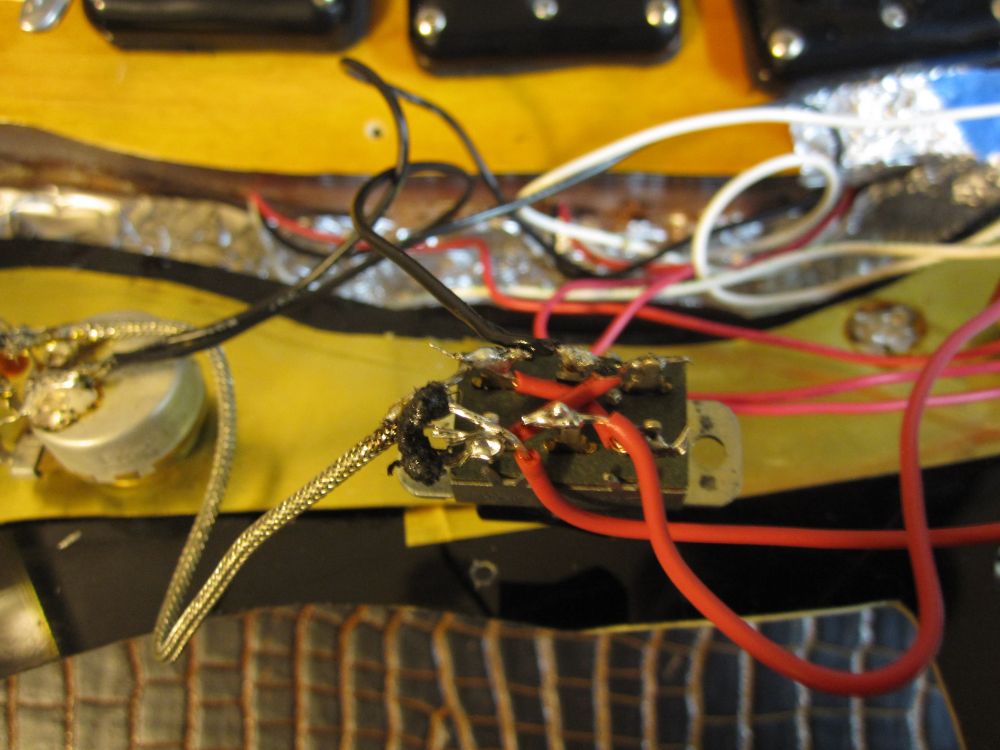
Here's the full circuit. Notice the brass shielding on the back of the pickguard and the hi-tech aluminum foil in the control cavity.
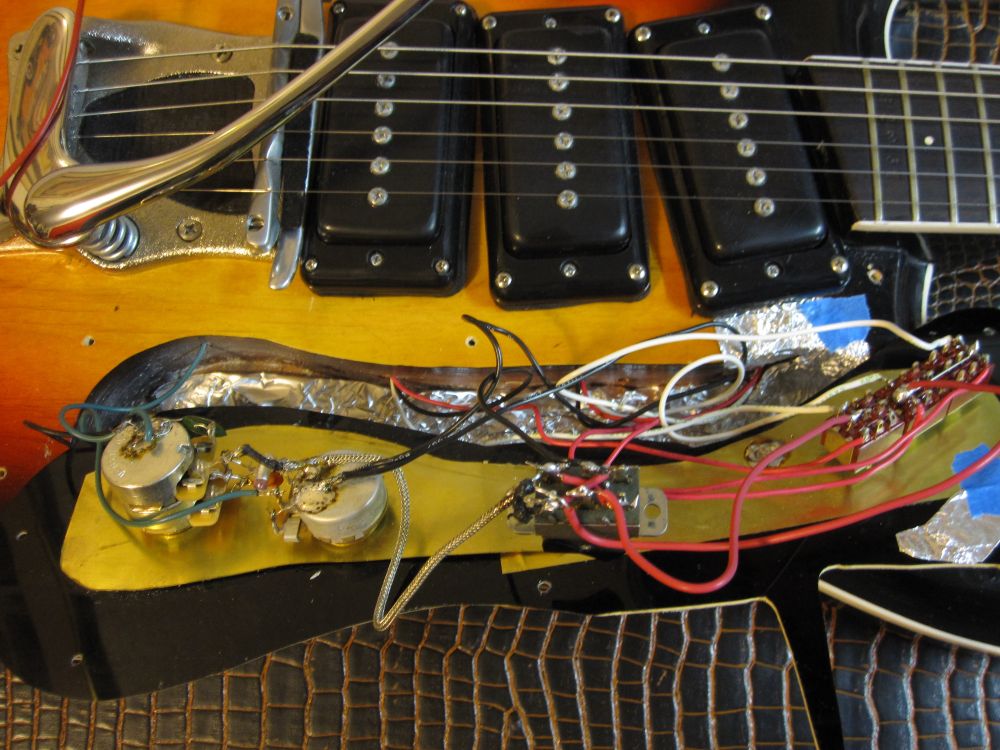
Next up was cutting the pickguard for the new switch. I took measurements of the control cavity to make sure there was clearance, and figured I'd keep it in line with vol/tone.
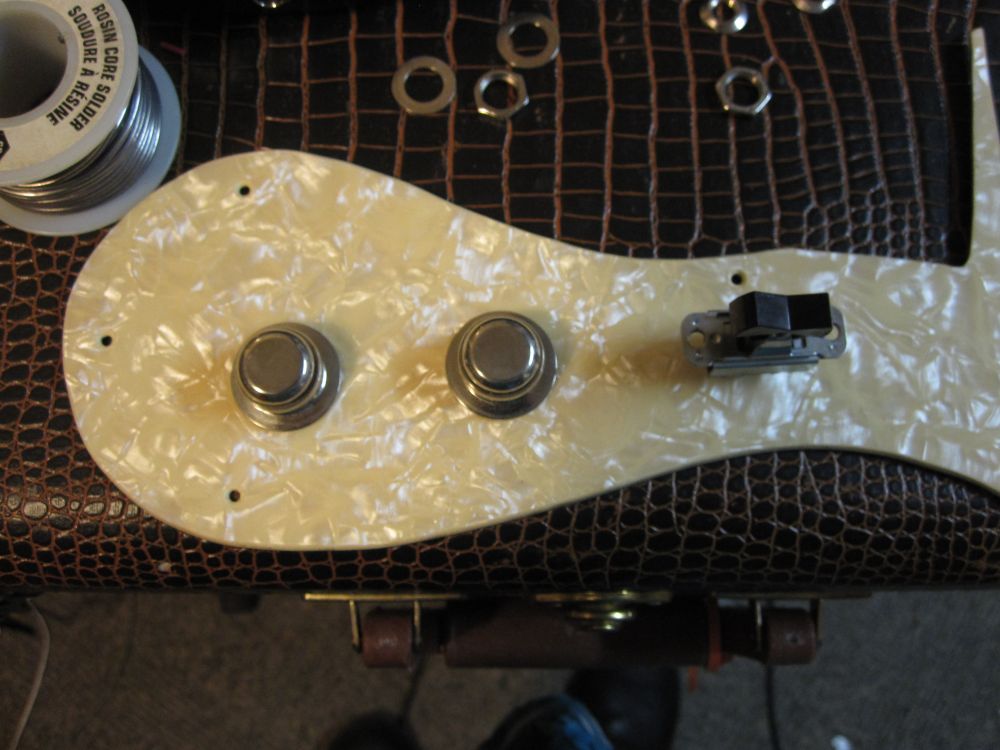
Pickguard marked for cutting. After choosing the center point, I used calipers to measure the dimensions of the rocker and marked those.
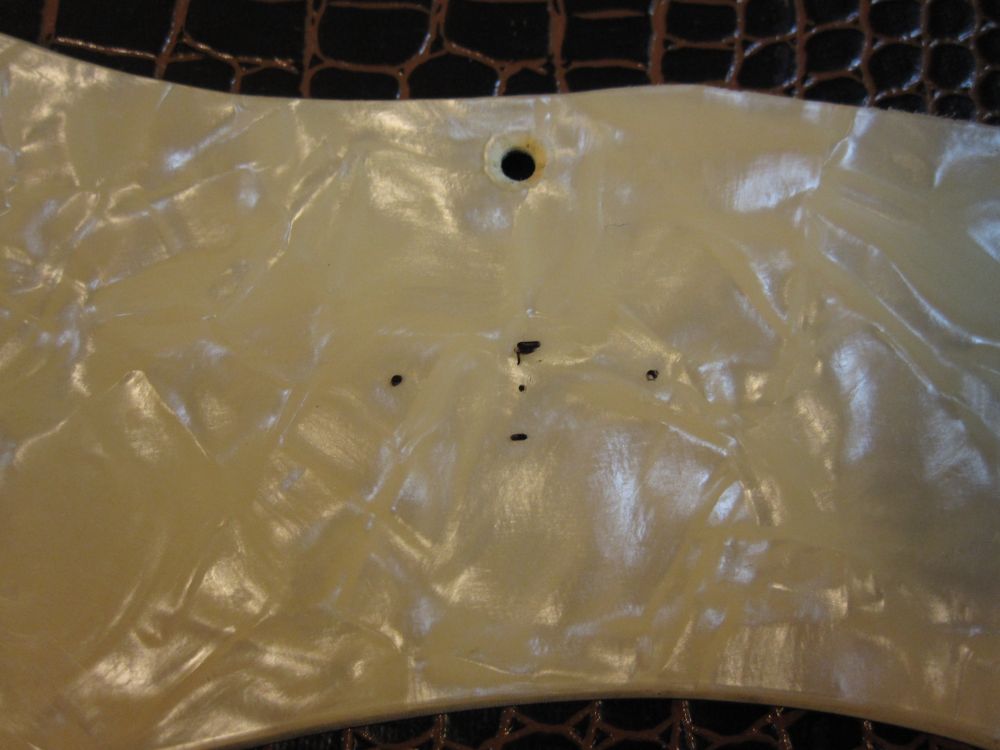
Cutting in progress, with the handy dandy dremel - cutting wheel for the sides and drill for the corners.
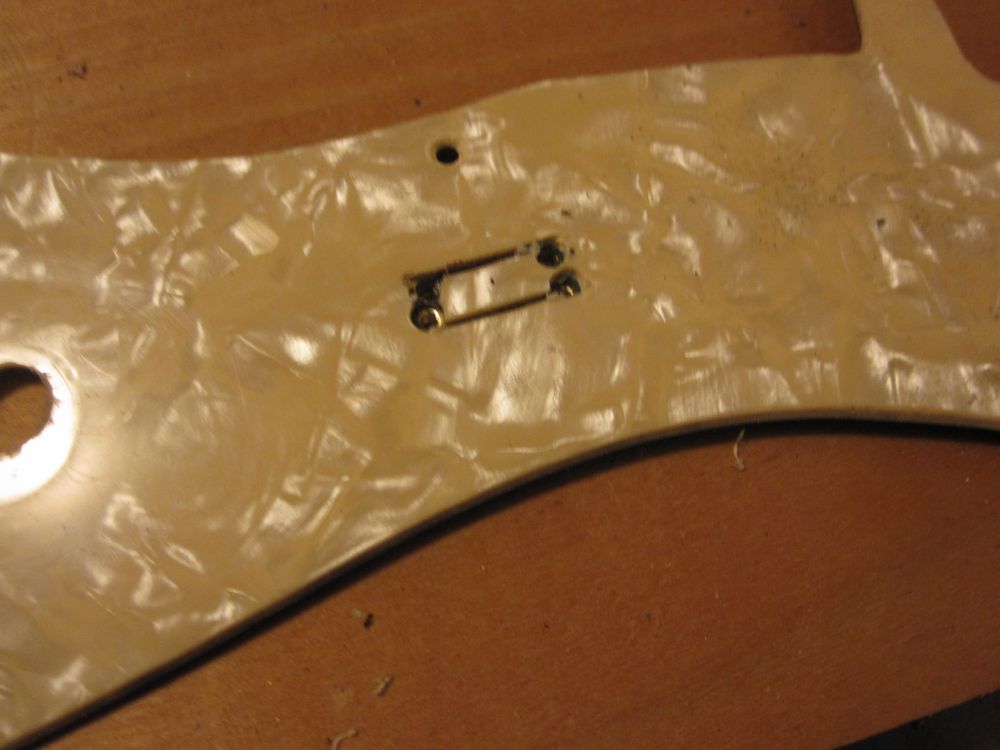
Here's the cutout after cleaning it up and squaring it off with miniature files. Also drilled the screw holes.
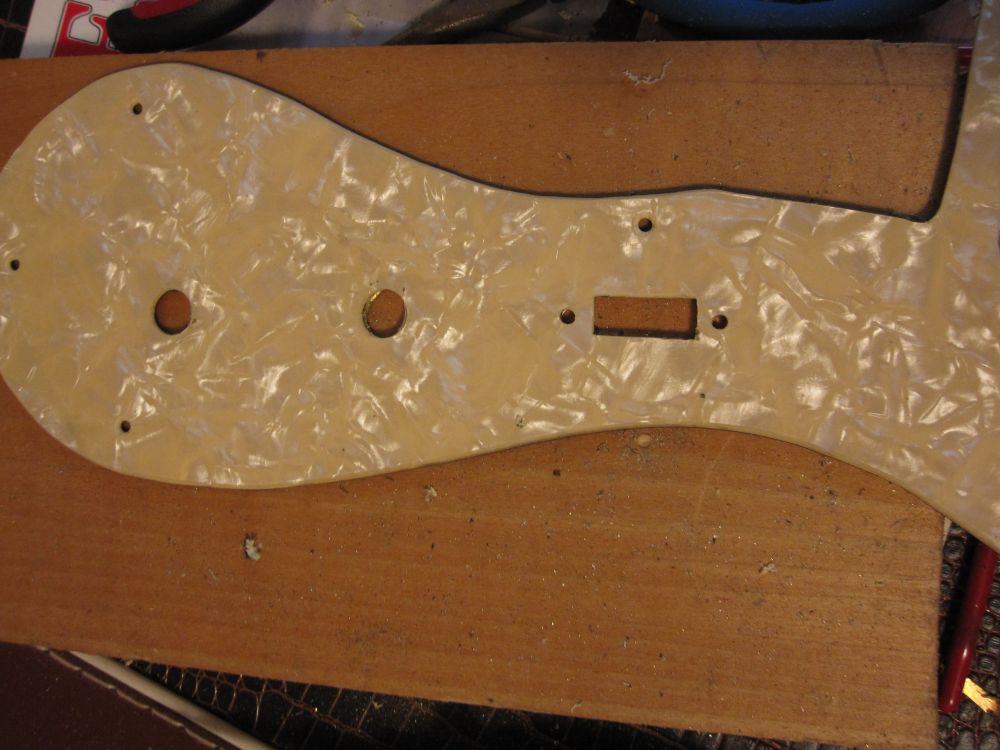
Because the rocker is built on top of the usual DPDT slider, the mounting points are well below the pickguard surface. Problem solved care of aluminum spacers cut to size with the dremel. I decided to use aluminum instead of nylon spacers for stability and addition grounding for the switch.
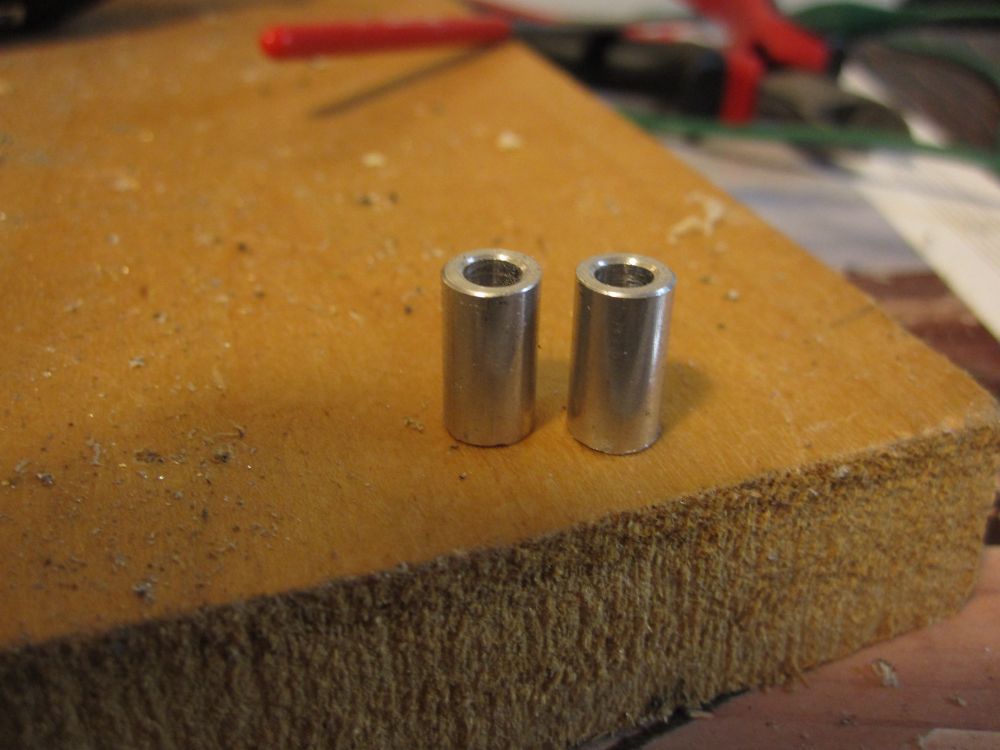
Switch mounted. The two pieces of brass on the pickguard are soldered together behind the switch; you can see a bit of the solder peeking through by the right side of the rocker.
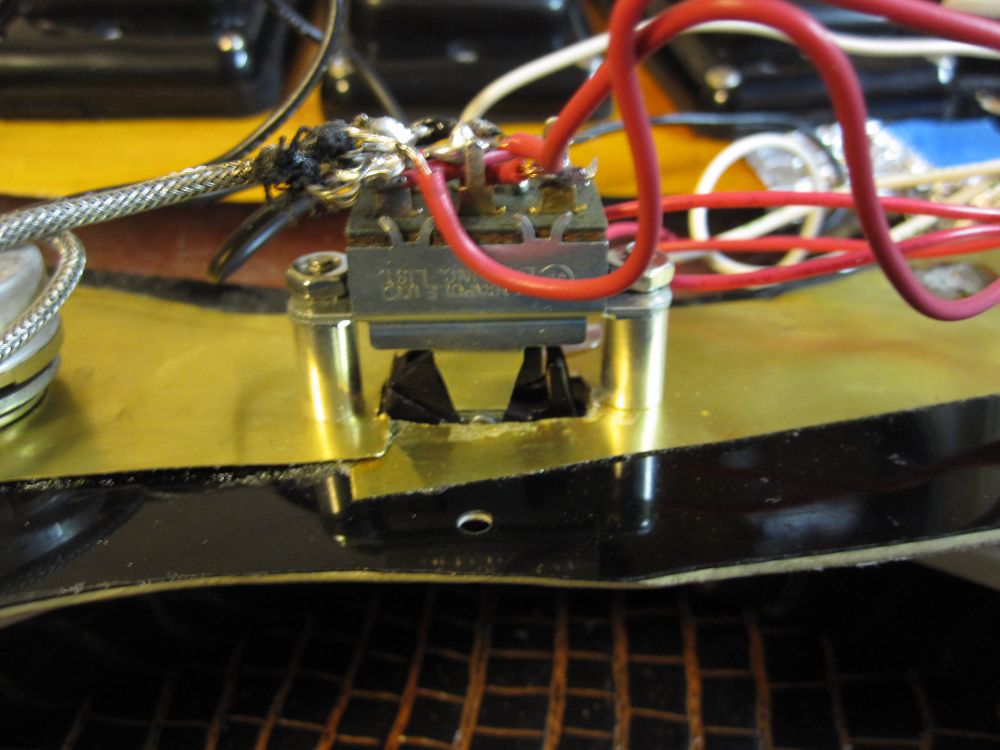
Switch mounted, topside. I wanted to have the switch a touch over the pickguard. The fulcrum of the rocker is actually flush with the guard, which makes toggling it smooth. The current position is the in-phase setting.
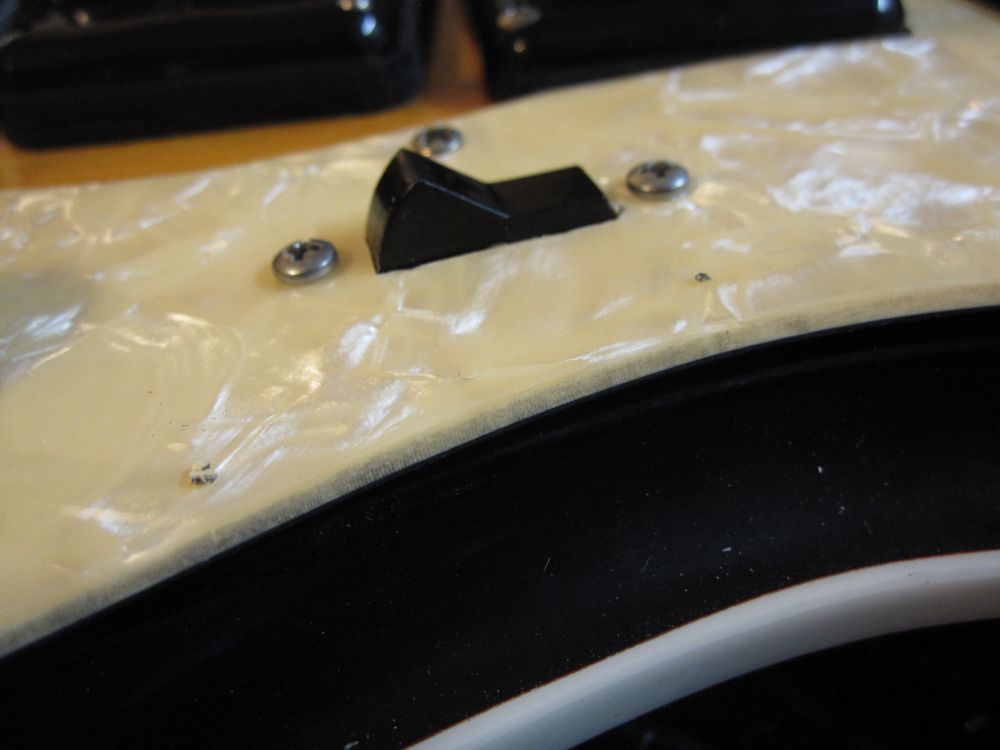
Finally, the full body shot. The switch is easily in reach but given the height of the bridge off the body and the height of the vibrato arm above that, the switch is well out of the way of accidental use.
